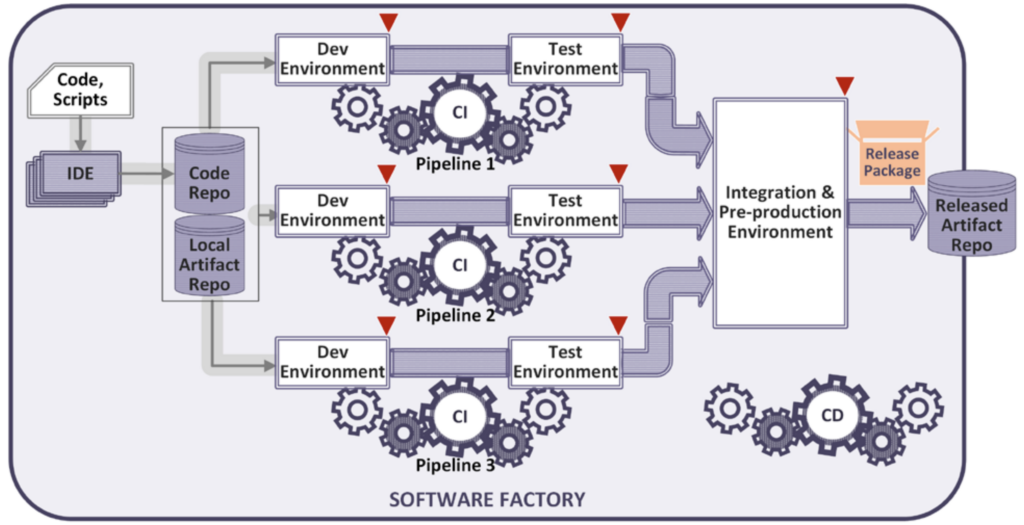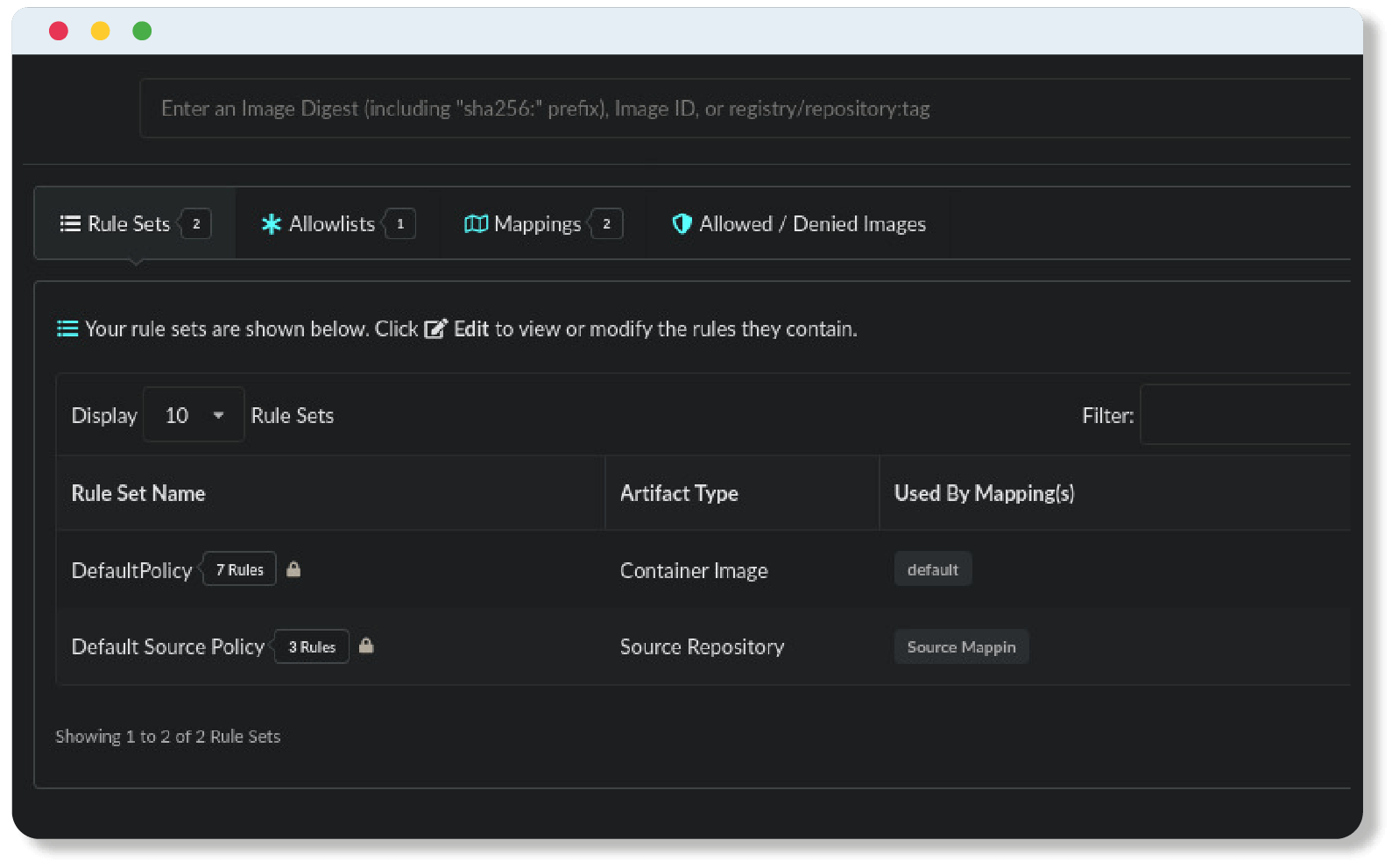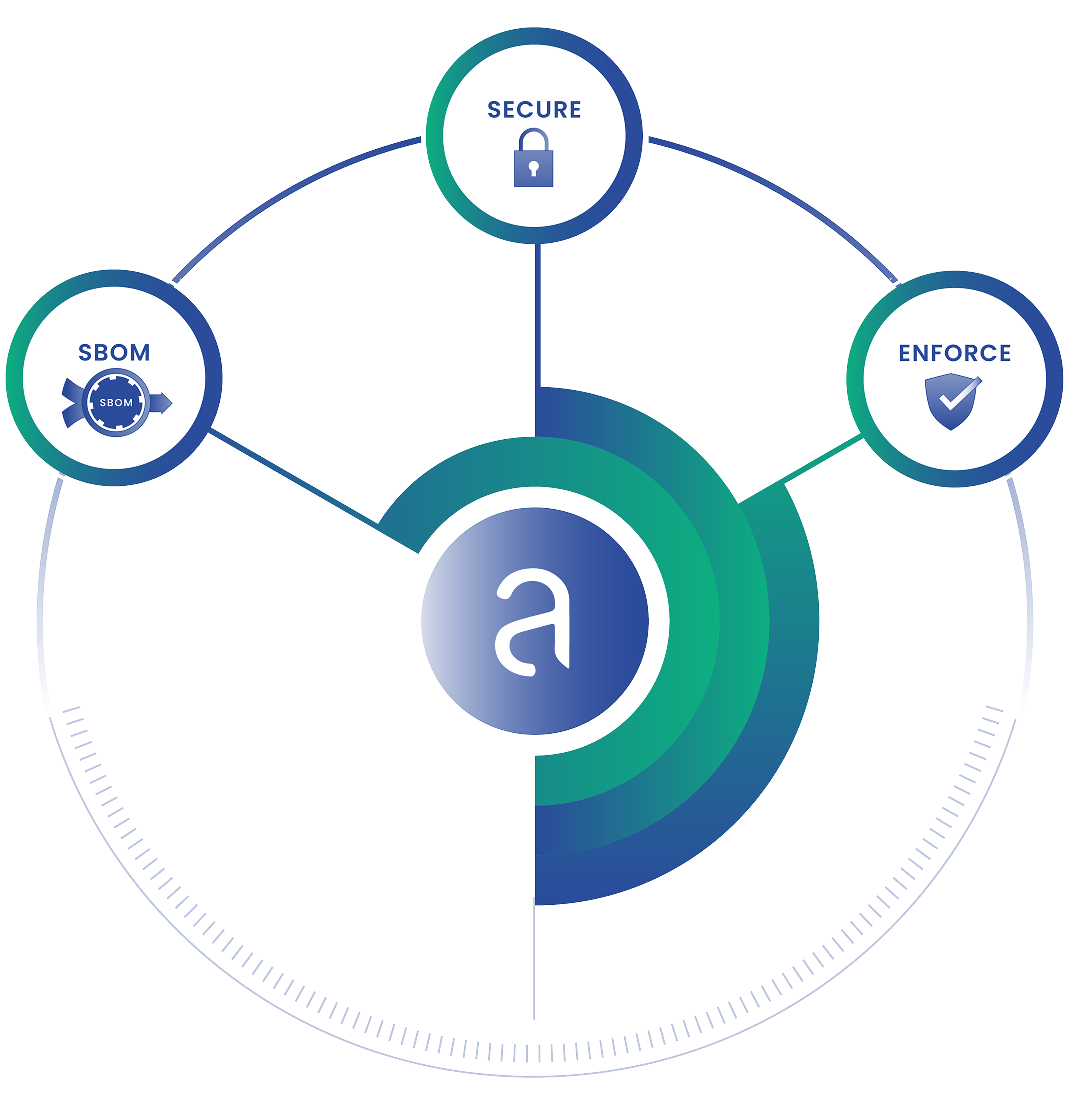This blog post is meant as a gateway to all things DoD software factory. We highlight content from across the Anchore universe that can help anyone get up to speed on what a DoD software factory is, why to use it and how to build one. This blog post is meant as an index to be scanned for the topics that are most interesting to you as the reader with links to more detailed content.
What is a DoD Software Factory?
The short answer is a DoD Software Factory is an implementation of the DoD Enterprise DevSecOps Reference Design. A slightly longer answer comes from our DoD software factory primer:
A Department of Defense (DoD) Software Factory is a software development pipeline that embodies the principles and tools of the larger DevSecOps movement with a few choice modifications that conform to the extremely high threat profile of the DoD and DIB.
Note that the diagram below looks like a traditional DevOps pipeline. The difference being that there are security controls layered into this environment that automate software component inventory, vulnerability scanning and policy enforcement to meet the requirements to be considered a DoD software factory.

Got the basics down? Go deeper and learn how Anchore can help you put the Sec into DevSecOps Reference Design by reading our DoD Software Factory Best Practices white paper.
Why do I want to utilize a DoD Software Factory?
For DoD programs, the primary reason to utilize a DoD software factory is that it is a requirement for achieving a continuous authorization to operation (cATO). The cATO standard specifically calls out that software is developed in a system that meets the DoD Enterprise DevSecOps Reference Design. A DoD software factory is the generic implementation of this design standard.
For Federal Service Integrators (FSIs), the biggest reason to utilize a DoD software factory is that it is a standard approach to meeting DoD compliance and certification standards. By meeting a standard, such as CMMC Level 2, you expand your opportunity to work with DoD programs.
Continuous Authorization to Operate (cATO)
If you’re looking for more information on cATO, Anchore has written a comprehensive guide on navigating the cATO process that can be found on our blog:
DevSecOps for a DoD Software Factory: 6 Best Practices for Container Images
The shift from traditional software delivery to DevSecOps in the Department of Defense (DoD) represents a crucial evolution in how software is built, secured, and deployed with a focus on efficiencies and speed. Our white paper advises on best practices that are setting new standards for security and efficiency in DoD software factories.

Cybersecurity Maturity Model Certification (CMMC)
The CMMC is the certification standard that is used by the DoD to vet FSIs from the defense industrial base (DIB). This is the gold standard for demonstrating to the DoD that your organization takes security seriously enough to work with the highest standards of any DoD program. The security controls that the CMMC references when determining certification are outlined in NIST 800-171. There are 17 total families of security controls that an organization has to meet in order to meet the CMMC Level 2 certification and a DoD software factory can help check a number of these off of the list.
The specific families of controls that a DoD software factory helps meet are:
- Access Control (AC)
- Audit and Accountability (AU)
- Configuration Management (CM)
- Incident Response (IR)
- Maintenance (MA)
- Risk Assessment (RA)
- Security Assessment and Authorization (CA)
- System and Communications Protection (SC)
- System and Information Integrity (SI)
- Supply Chain Risk Management (SR)
If you’re looking for more information on how apply software supply chain security to meet the CMMC, Anchore has published two blog posts on the topic:
NIST SP 800-171 & Controlled Unclassified Data: A Guide in Plain English
- NIST SP 800-171 is the canonical list of security controls for meeting CMMC Level 2 certification. Anchore has broken down the entire 800-171 standard to give you an easy to understand overview.
Automated Policy Enforcement for CMMC with Anchore Enterprise
- Policy Enforcement is the backbone of meeting the monitoring, enforcement and reporting requirements of the CMMC. In this blog post, we break down how Anchore Federal can meet a number of the controls specifically related to software supply chain security that are outlined in NIST 800-171.
How do I meet the DevSecOps Reference Design requirements?
The easy answer is by utilizing a DoD Software Factory Managed Service Provider (MSP). Below in the User Stories section, we deep dive into the US Air Force’s Platform One given they are the preeminent DoD software factory.
The DIY answer involves carefully reading and implementing the DoD Enterprise DevSecOps Reference Design. This document is massive but there are a few shortcuts you can utilize to help expedite your journey.
Container Hardening
Deciding to utilize software containers in a DevOps pipeline is almost a foregone conclusion at this point. What is less well known is how to secure your containers, especially to meet the standards of a DoD software factory.
The DoD has published two guides that can help with this. The first is the DoD Container Hardening Guide, and the second is the Container Image Creation and Deployment Guide. Both name Anchore Federal as an approved container hardening scanner.
Anchore has published a number of blogs and even a white paper that condense the information in both of these guides into more digestible content. See below:
Container Security for U.S. Government Information Systems
- This comprehensive white paper breaks down how to achieve a container build and deployment system that is hardened to the standards of a DoD software factory.
Enforcing the DoD Container Image and Deployment Guide with Anchore Federal
- This blog post is great for those who are interested to see how Anchore Federal can turn all of the requirements of the DoD Container Hardening Guide and the Container Image Creation and Deployment Guide into an easy button.
Deep Dive into Anchore Federal’s Container Image Inspection and Vulnerability Management
- This blog post deep dives into how to utilize Anchore Federal to find container vulnerabilities and alert or report on whether they are violating the security compliance required to be a DoD software factory.
Policy-based Software Supply Chain Security and Compliance
The power of a policy-based approach to software supply chain security is that it can be integrated directly into a DevOps pipeline and automate a significant amount of alerting, reporting and enforcement work. The blog posts below go into depth on how this automated approach to security and compliance can uplevel a DoD software factory:
A Policy Based Approach to Container Security & Compliance
- This blog details how a policy-based platform works and how it can benefit both software supply chain security and compliance.
The Power of Policy-as-Code for the Public Sector
- This follow-up to the post above shows how the policy-based security platform outlined in the first blog post can have significant benefits to public sector organizations that have to focus on both internal information security and how to prove they are compliant with government standards.
Benefits of Static Image Inspection and Policy Enforcement
- Getting a bit more technical this blog details how a policy-based development workflow can be utilized as a security gate with deployment orchestration systems like Kubernetes.
Getting Started With Anchore Policy Bundles
- An even deeper dive into what is possible with the policy-based security system provided by Anchore Enterprise, this blog gets into the nitty-gritty on how to configure policies to achieve specific security outcomes.
Unpacking the Power of Policy at Scale in Anchore
- This blog shows how a security practitioner can extend the security signals that Anchore Enterprise collects with the assistance of a more flexible data platform like New Relic to derive more actionable insights.
Security Technical Implementation Guide (STIG)
The Security Technical Implementation Guides (STIGs) are fantastic technical guides for configuring off the shelf software to DoD hardening standards. Anchore being a company focused on making security and compliance as simple as possible has written a significant amount about how to utilize STIGs and achieve STIG compliance, especially for container-based DevSecOps pipelines. Exactly the kind of software development environments that meet the standards of a DoD software factory. View our previous content below:
4 Ways to Prepare your Containers for the STIG Process
- In this blog post, we give you four quick tips to help you prepare for the STIG process for software containers. Think of this as the amuse bouche to prepare you for the comprehensive white paper that comes next.
Navigating STIG Compliance for Containers
- As promised, this is the extensive document that walks you through how to build a DevSecOps pipeline based on containers that is both high velocity and secure. Perfect for organizations that are aiming to roll their own DoD software factory.
User Stories
Anchore has been supporting FSIs and DoD programs to build DevSecOps programs that meet the criteria to be called a DoD software factory for the past decade. We can write technical guides and best practices documents till time ends but sometimes the best lessons are learned from real-life stories. Below are user stories that help fill in all of the details about how a DoD software factory can be built from scratch:
DoD’s Pathway to Secure Software
- Join Major Camdon Cady of Platform One and Anchore’s VP of Security, Josh Bressers as they discuss the lessons learned from building a DoD software factory from the ground up. Watch this on-demand webinar to get all of the details in a laid back and casual conversation between two luminaries in their field.
- If you prefer a written format over video, this case study highlights how Platform One utilized Red Hat OpenShift and Anchore Federal to build their DoD software factory that has become the leading Managed Service Provider for DoD programs.
Conclusion
Similar to how Cloud has taken over the infrastructure discussion in the enterprise world, DoD software factories are quickly becoming the go-to solution for DoD programs and the FSIs that support them. Delivering on the promise of the DevOps movement of high velocity development without compromising security, a DoD software factory is the one-stop shop to upgrade your software development practice into the modern age and become compliant as a bonus! If you’re looking for an easy button to infuse your DevOps pipeline with security and compliance without the headache of building it yourself, take a look at Anchore Federal and how it helps organizations layer software supply chain security into a DoD software factory and achieve a cATO.



